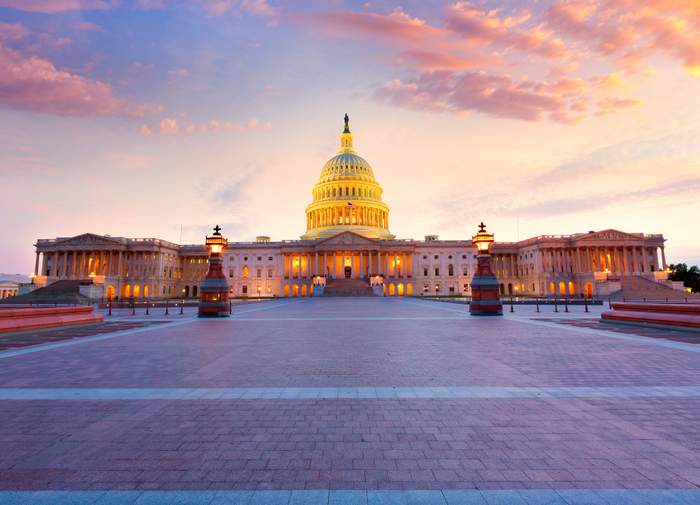The facts and circumstances era: Why solar developers should assume more IRS scrutiny — and prepare for it now

The Bureau of Land Management’s decision in October to cancel the environmental review of the 6.2-GW Esmeralda 7 project in order to review and permit each project separately, was not an outright cancellation, but a procedural delay. Each project could still be on track, but the future is less certain, and the timelines are all pushed out.
Procedural delays of this type are more likely after a secretarial order from the Department of the Interior stated that “all decisions, actions, consultations, and other undertakings” that are “related to wind and solar energy facilities” under federal permitting review will now require personal sign off by the Secretary of the Interior – a list of 69 actions we previously reported here.
The Esmeralda 7 review, and the general increased oversight / scrutiny of renewables by the Trump administration, got me thinking of an unrelated interview I conducted with the accounting professionals at Forvis Mazars, an international audit, accounting and consulting firm serving U.S. clients with approximately 50 GWs of development pipeline assets in development. Our chat concerned the Dept. of Treasury’s finalized rules (August Notice 2025-42) clarifying what defines “start of construction” for certain energy projects in order to qualify for federal tax credits.
In that Notice, Treasury removed the 5% safe harbor for large solar projects (over 1.5 MW) and forced the industry onto a single path for securing the Investment Tax Credit: proving “physical work of a significant nature” by the July 4, 2026, construction start deadline.
The 5% safe harbor was popular because it was a nice binary calculation – spend 5% on qualifying costs and boom, you’ve started. Documenting “physical work of a significant nature,” on the other hand, is facts-and-circumstances, which is more open to interpretation and case law.
Using “physical work” to define a project’s construction start date isn’t new, but it was used less often. That lack of history means there is not much of an audit history or library of case law to base assumptions on.
In a vacuum, this isn’t huge news – it is “a common scenario in tax law,” explains Ben Walters with Forvis Mazars. “You don’t have black and white guidance. There’s a lot of facts and circumstances and people come up with their process. They do their best to understand the rules and regulations and implement them. If it gets pulled by the courts or gets challenged, then we start to get some more insight into how Treasury thinks about it. Then, you start to get more solid guidelines as time goes on.
“The question now is: 1) Has it gone through the courts? 2) To what degree has this been challenged, and 3) How solid are people with those conclusions?” Walters says.
But we’re not in a vacuum. Beyond the Esmeralda 7 review switcheroo, the administration has already clawed back ~$7 billion from the Solar for All program, canceled over $7.5 billion in DOE awards, rescinded major loan guarantees, tightened tax-credit rules via the OBBBA, and subjected renewables to new permitting hurdles.
Taken in that context, the ‘physical work’ rule could cause developers mental anguish well beyond the July 4, 2026, construction-start deadline.
“Every company has to get comfortable that what they are doing will pass muster in a potential audit,” explains Troy Taylor of Forvis Mazars, repeating a word that might as well go into infinity: “Document, document, document.”
Because the audits are coming.
Audit pressure is expected to rise, not fall
Renewable energy projects of this size may already be of a higher risk for audit. While IRS capacity is thin today, none of the accounting professionals interviewed expect that to mean fewer audits for solar projects.
“Most are anticipating the IRS audit risk for these tax credits, and for these projects to be higher risk than they were previously,” says Tyler Baity, also with Forvis Mazars. “And I think that is influencing their approach and their strategy.”
Walters explained what that means in reality: “You come up with your process, document it, implement it — and if it gets challenged, that’s when we start to get more solid guidelines.”
IRS audits are also generally taking longer than ever due to the short staff.
“We’ve seen a lot of audits get delayed, and we’re not sure when they’re going to close for instance because of all the different changes at the IRS,” Taylor said.
What counts is already contentious
What constitutes “physical work?” There is a list in the guidance.
On-site construction mostly starts with installation of physical structures. “If you’re installing racking on a site, you obviously have commenced construction,” explains Taylor. “But planning, testing, permitting, securing financing, engineering, site clearing, excavating — those do not.” This list of exclusions is definitely longer than the inclusions.
Off-site work – the manufacture of unique products for the project – can count too. This is likely to be the most popular route given the short timeline between now and July 4, 2026, to start construction to earn the tax credit.
“I think most of our developers are not to the point of on-site construction yet,” Baity relays. “They’re going to be using more of the circumstances of off-site manufacturing, presumably of transformers, or customized racking, and then working through the physical start criteria to make sure they have evidence to still qualify.”
This is also likely to draw more facts-and-circumstances scrutiny.
“You’ve got to make sure those are unique components for your project… under a binding written contract. They can’t just be pulled out of inventory,” Taylor said.
Even there, the threshold is untested:
“At what point does it qualify? Signing the contract? Or when it’s on an assembly line?” Taylor asks .”We haven’t seen anything that says X, Y, Z has to happen.”
The “continuous work of a significant nature” throughout the life of a project is also a definition to keep in mind. Historically, proving continuous work has not been a big concern.
“Fortunately, that definition hasn’t really changed since the prior guidance, which includes a four-year safe harbor,” says Baity. “So, if you’ve completed it within four years, you’re under this safe harbor..”
But in an era where procedural delays ramp up?
“Once you get outside the four years, you’re opening up for interpretation,” Baity explains. “People are very aware of that time frame because they know they’re going to need to be able to clearly somehow document that it’s been of a continuous nature.”
Proving continuous work still might not be a huge concern. There are 11 different exceptions to the continuity guidance, such as a natural disaster, interconnection queue delays, or even financial upheaval if you can document it.
Developer playbook in the post-safe-harbor era
As we enter the facts and circumstances era, Baity is watching what tax equity gets comfortable with, and what tax credit recapture insurance is doing from an underwriting perspective.
“I think everybody will take the interpretations and try to find a best practice, but ultimately, unless there’s a private revenue ruling or, ultimately the tax credits get picked for IRS audit, you won’t really have anything authoritative to go by. This is in its infancy until the IRS puts out additional information — which likely would only come out in an IRS audit or private revenue ruling.”
Until then, it’s a rush to July 4, 2026, with only educated guesses and a ton of documentation to back it up.
“I just don’t know that we’re really going to see complete clarity in the near term,” Baity says. “Developers need to be moving now. They’ve got to be figuring out strategies now.”
My two cents per Watt
The Esmeralda 7 project review switcheroo is not an IRS issue. But it is another example of the federal government’s heightened scrutiny of renewable energy projects, and a demonstration of another department’s expanded oversight in action. The result of the Esmeralda 7 story so far is just a delay, and perhaps nothing more. It is worth keeping in mind as we enter the facts and circumstances era that hinges on IRS interpretation instead of mathematical certainty.




